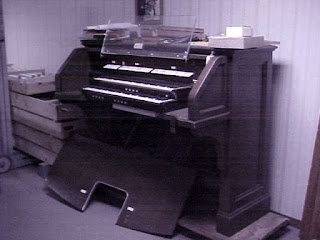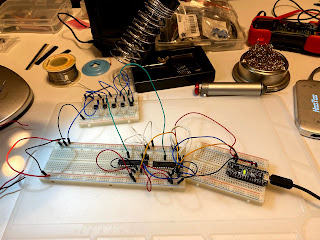SAM I AM
 Here they are, my gently-used Stop Action Magnet units.
Here they are, my gently-used Stop Action Magnet units.They were removed from a project by the previous owner and stored likely in a garage, they needed a bit of cleaning. Now they are all ready to prepare for installation in my organ console.
These are for flip tab stops. A little plastic bit with the name of the stop engraved on it gets screwed onto the little metal tab. Pushing the tab down activates the stop and flipping it back up closes it.
There is a reed switch, visible on the front side, that lets the computer figure out the current position of the stop. It can be polled like the keyboards to discover if the organist has flipped it. The tab can also be flipped by the computer - by activating one of thise electromagnet coils. If you push a piston button, it activates a bunch of stops in Hauptwerk. Hauptwerk can then send MIDI commands out to the console to instruct it to flip the tabs to match the current state of the virtual organ.
With virtual organ software it really isn't necessary to have physical tabs at all, but they are so snazzy. I can have Hauptwerk load a default organ configured to match the labels on the physical stops, and then I don't need a screen or keyboard at all, unless I want to experiment with other organ sample sets. I like the idea of just turning the organ on and having it work, keep the computer under the covers unless needed.
I have 36 of these things, and they each draw 0.5 amps of power, so I have acquired an 18 amp 13.5 volt Astron switching power supply to run them. One rarely activates all of them at once, but you need it to be possible just in case. I breadboarded up a simple circuit with a push button and tested one of the SAMs to make sure I'd sussed out the wiring correctly. It went 'pfft' very nicely. The circuit for the coils are separate from the circuit for the reed switch. This will let me connect the reeds directly to my arduino controller at 5 volts, whilst feeding the coils the higher voltage they need to suck that hunk of metal to a new position.
Next...





Comments
Post a Comment